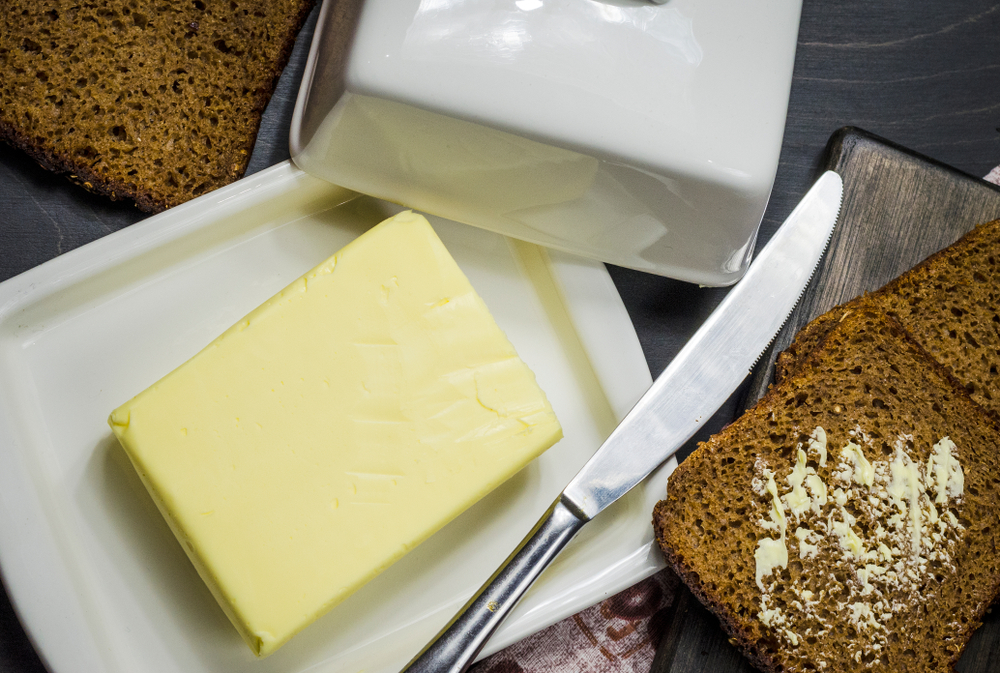There has been an ongoing debate about margarine versus butter. Some may extol the virtues of margarine instead of butter. Both may have the same texture and purposes, but actually very different. Butter is derived from cow milk. In butter factories, a large quantity of milk is stored n vats, then left to stand. The nutrient-rich component of the milk is heavier and it will slowly descend to the bottom. The cream, which is the lighter part of the milk, will float on top. The separated fat is beaten up by a special machine, resulting into a pale yellow stuff with semi solid consistency. Salt, colouring, flavoring substances and others could be added. Unlike cheese, butter can be immediately packaged into containers.
Both margarine and butter are naturally produced, but many people are still engaged in the argument. Although it may taste quite different, margarine is a good substitute to butter in many cases. In general, margarine contains less unsaturated fats compared to butter. Regardless of whether you choose butter or margarine, you should pay a close attention to the amount of salt that manufacturers are adding to margarines. Quality margarines may contain good combination of vegetables oils, while being enriched with Omega 6 and Omega 3. On the other hand, butter is known for its animal fat and it has limited longevity, compared to butter.
When cooking with margarine, you should be able to reinvigorate your passion to cook at home. Even without butter, you can make butter-tasting baked products. Often, all you need are just flour, sugar, egg yolk and enough margarine. When cooking with margarine, you will know that it has reached proper temperature, when its color changes from opaque to translucent. Unlike some oils, margarine doesn’t split easily when cooked. This characteristic is really suitable, if you want to achieve good baking results. However, there are some things to consider when you are using margarine. Although margarine is generally healthier than butter, constant consumption is still bad for your body. One substance that makes margarine somewhat notorious among health enthusiasts is trans fat.
Fat in margarine has slight plasticky texture. When vegetable oil is exposed to high pressure, its molecular structure will change and it will turn into a pseudo-plastic substance. Unfortunately, this substance doesn’t break down easily and can easily clog your arteries, increasing the risks of stroke and heart diseases. So, it is better to limit the consumption of both butter and margarine. When eating something that contains butter or margarine, you should consume high fiber diet as well. This will ensure that excess fat will be brought along with the plant-based dietary fiber outside your colon. Healthier alternatives of margarine can be made from sunflower and olive oil. Margarine made from palm oil is generally riskier for your health.


